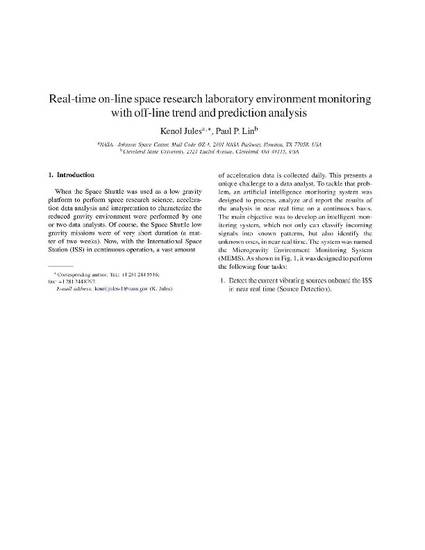
With the International Space Station currently operational, a significant amount of acceleration data is being down-linked, processed and analyzed daily on the ground on a continuous basis for the space station reduced gravity environment characterization, the vehicle design requirements verification and science data collection. To help understand the impact of the unique spacecraft environment on the science data, an artificial intelligence monitoring system was developed, which detects in near real time any change in the reduced gravity environment susceptible to affect the on-going experiments. Using a dynamic graphical display, the monitoring system allows science teams, at any time and any location, to see the active vibration disturbances, such as pumps, fans, compressor, crew exercise, re-boost and extra-vehicular activities that might impact the reduced gravity environment the experiments are exposed to.
The monitoring system can detect both known and unknown vibratory disturbance activities. It can also perform trend analysis and prediction by analyzing past data over many increments (an increment usually lasts 6 months) collected onboard the station for selected disturbances. This feature can be used to monitor the health of onboard mechanical systems to detect and prevent potential systems failures. The monitoring system has two operating modes: online and offline. Both near real-time on-line vibratory disturbance detection and off-line detection and trend analysis are discussed in this paper.
